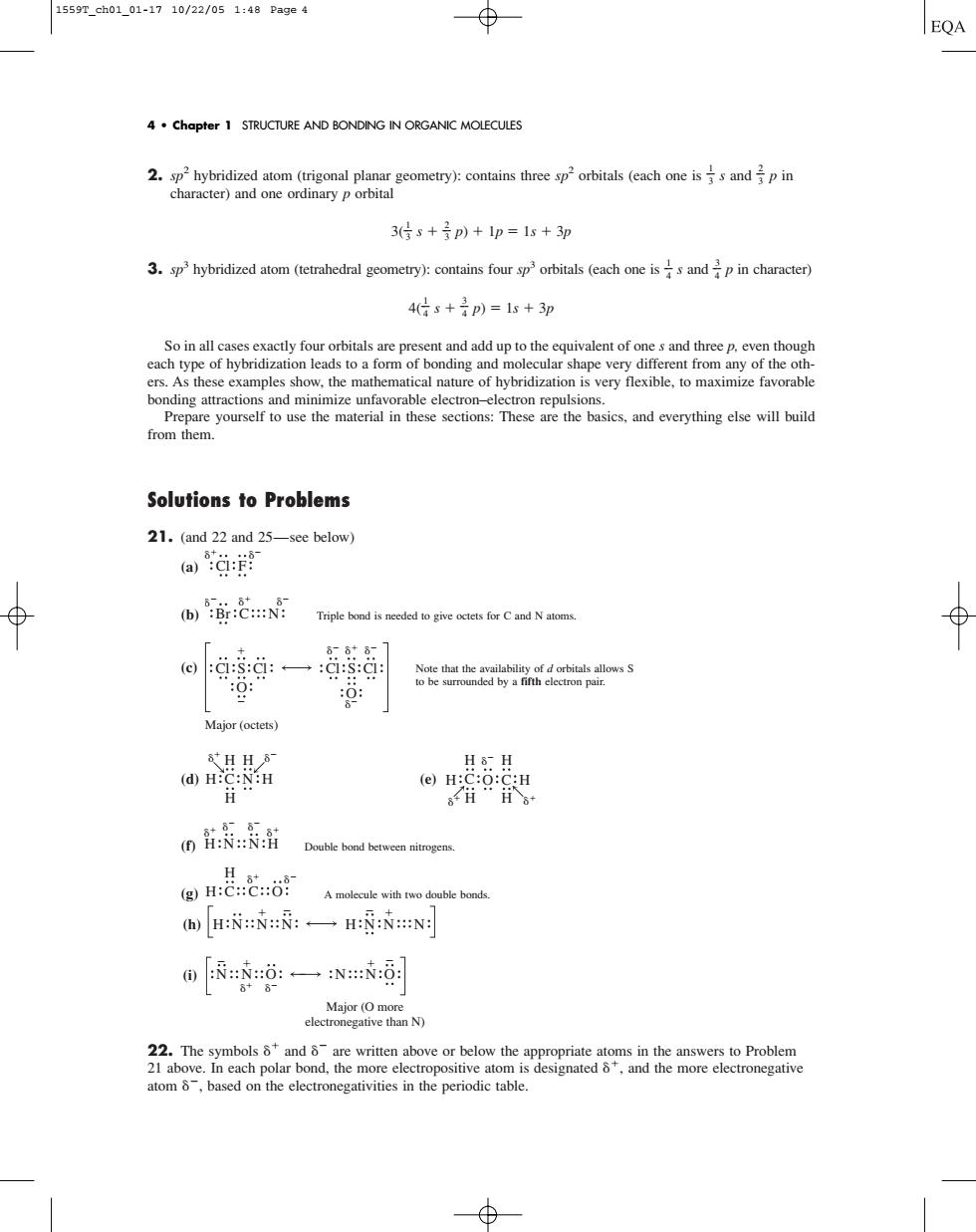正在加载图片...

1559r_ch0101-1710/22/051:48Page4 EQA 4.chapter 1 STRUCTURE AND BONDNG IN ORGANIC MOLECULES 2.sphybridized atom (trigonal planar geometry):contains three sporbitals (each one iss andp in character)and one ordinary p orbita 3附s+p)+p=1s+3p 3.sphybridized atom(tetrahedral geometry):contains four sporbitals (each one iss andp in character) 4哈s+p)=1s+3p So in all case exactly four orbitals are pre sent and add up to the equivalent of one s and three p.even though each type of hybridization leads toa form of bonding and molecular shape very different from any of the o show,the mathema al nature of hybridiza on is very flexible.to maximize favorabl yourl o e the mea hen Thee r the biand ything e illh Solutions to Problems 21.(and 22 and 25 -see below a): (b):C::N Triple bond is needed to give octets for C and N atoms. eththe5 (d)H 9 o有 侧H是&0 HN:N::一H:N @::6:一N:6 atom 8.based on the electronegativities in the periodic table.2. sp2 hybridized atom (trigonal planar geometry): contains three sp2 orbitals (each one is 1 3 s and 2 3 p in character) and one ordinary p orbital 3( 1 3 s 2 3 p) 1p 1s 3p 3. sp3 hybridized atom (tetrahedral geometry): contains four sp3 orbitals (each one is 1 4 s and 3 4 p in character) 4( 1 4 s 3 4 p) 1s 3p So in all cases exactly four orbitals are present and add up to the equivalent of one s and three p, even though each type of hybridization leads to a form of bonding and molecular shape very different from any of the others. As these examples show, the mathematical nature of hybridization is very flexible, to maximize favorable bonding attractions and minimize unfavorable electron–electron repulsions. Prepare yourself to use the material in these sections: These are the basics, and everything else will build from them. Solutions to Problems 21. (and 22 and 25—see below) (a) (b) Triple bond is needed to give octets for C and N atoms. (c) Note that the availability of d orbitals allows S to be surrounded by a fifth electron pair. (d) (e) (f) Double bond between nitrogens. (g) A molecule with two double bonds. (h) (i) 22. The symbols and are written above or below the appropriate atoms in the answers to Problem 21 above. In each polar bond, the more electropositive atom is designated , and the more electronegative atom , based on the electronegativities in the periodic table. N N O N N O Major (O more electronegative than N) H N N N H N N N H H C C O H H N N H H H H C O C H H H H H H C N H Cl Cl S Cl Cl S O O Major (octets) Br C N Cl F 4 • Chapter 1 STRUCTURE AND BONDING IN ORGANIC MOLECULES 1559T_ch01_01-17 10/22/05 1:48 Page 4�������������������